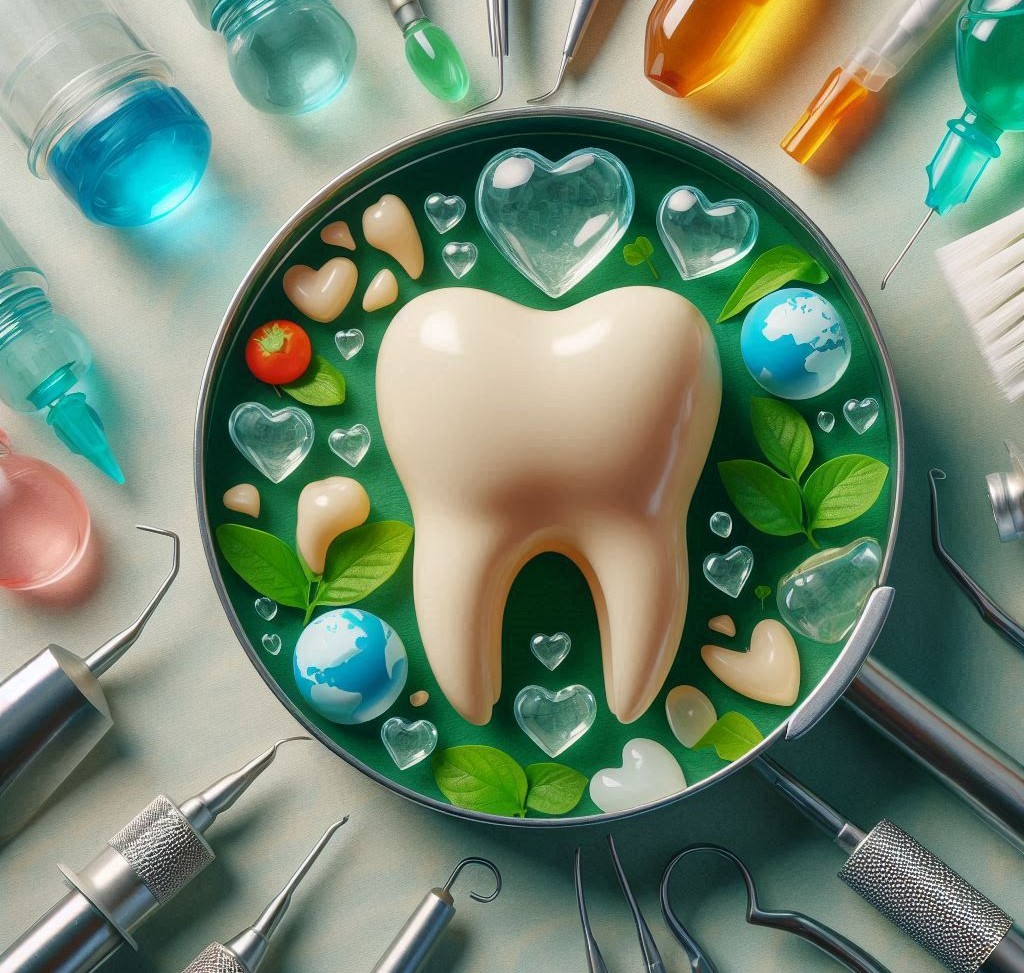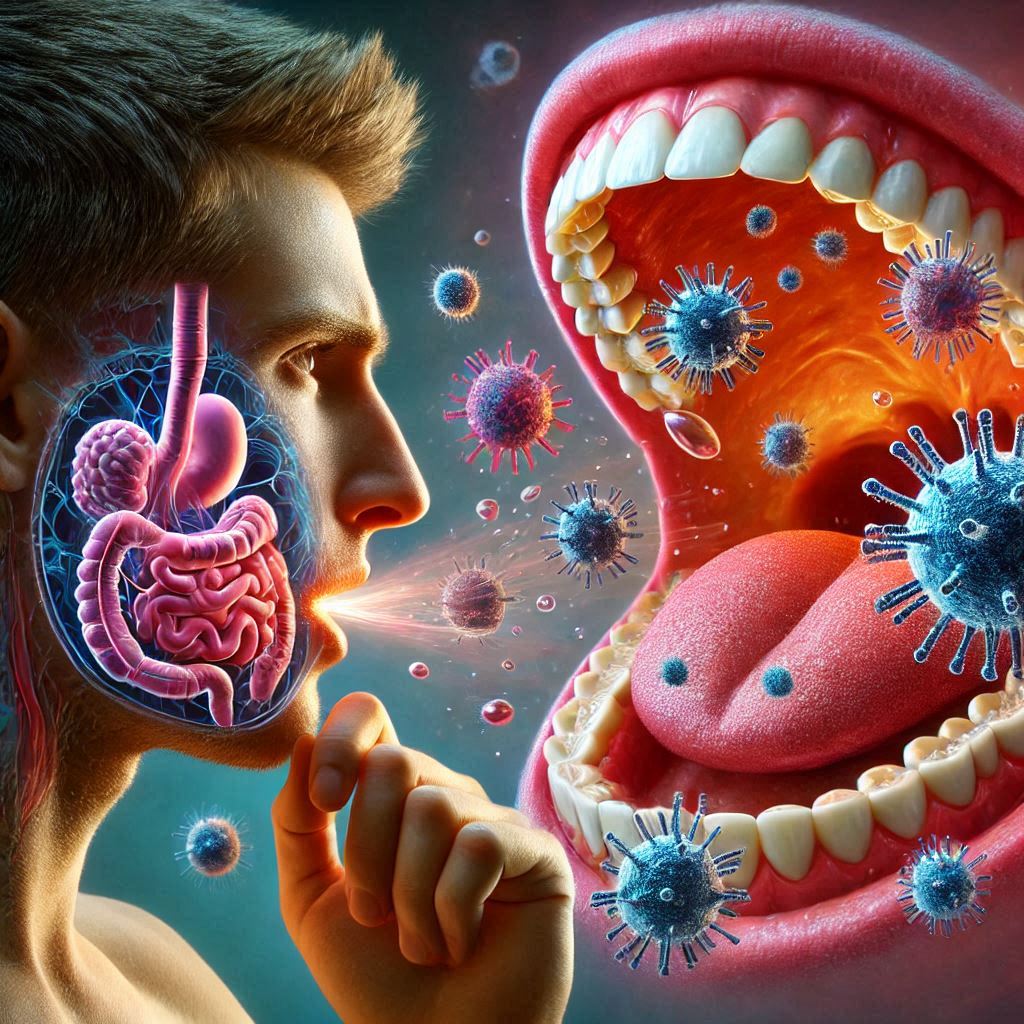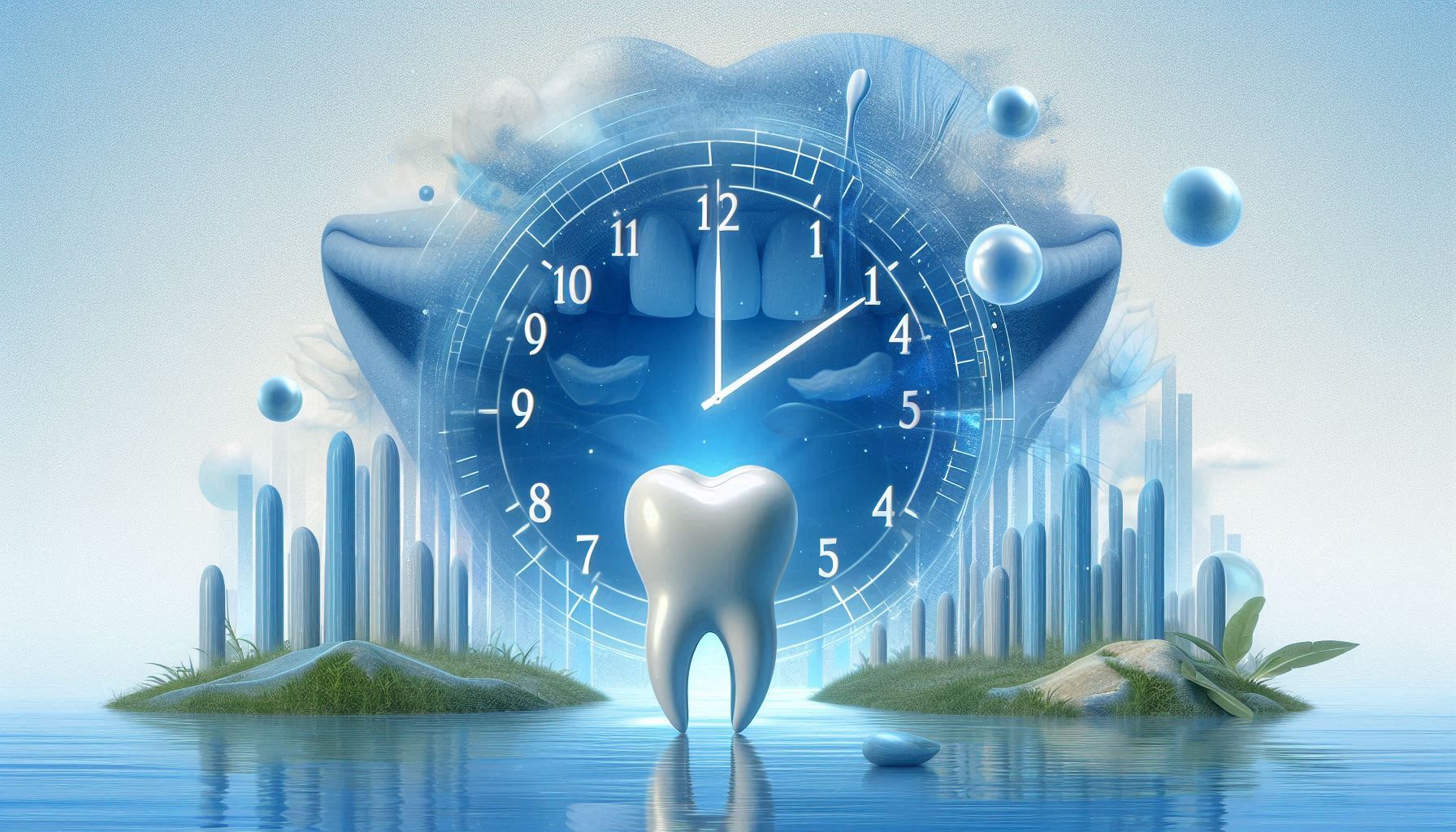Introduction
Brushing your teeth is something most people do daily. In fact, we brush our teeth multiple times a day, but how many of us actually know whether we are brushing properly? The right technique can make all the difference in maintaining oral hygiene. The process of brushing your teeth is not just about making them look clean or fresh. It’s about actively preventing cavities, gum disease, and even more serious health issues like heart disease. Brushing is a fundamental part of oral care, yet it is often performed in a way that’s either too hasty or ineffective.
Proper brushing is an essential part of preventing common oral health problems, including plaque buildup, cavities, and gum disease. However, many individuals unknowingly make common mistakes while brushing, such as brushing too aggressively or not brushing for long enough. A growing body of research emphasizes the importance of brushing correctly, showing that doing so can improve not only your oral health but also your overall health.
This guide will explore the optimal brushing techniques, discuss common brushing errors, and provide you with expert advice on how to achieve better oral hygiene. You’ll discover why brushing properly matters and how you can adjust your habits to make your dental care routine more effective.
The Importance of Brushing Your Teeth
A Deep Dive into the Role of Brushing in Oral Health
Brushing your teeth isn’t just about achieving a clean smile—it’s essential for maintaining the overall health of your mouth and body. A good brushing routine has far-reaching consequences for your dental hygiene, but its effects go beyond just your mouth. Research suggests that good oral hygiene can influence your entire well-being, and poor oral health can be linked to other systemic issues.
What Happens When You Don’t Brush Properly:
- Plaque Formation: Plaque is a sticky film of bacteria that forms on your teeth and gums after eating. When not removed regularly, plaque turns into tartar, a hardened substance that can only be removed by a dental professional. Plaque and tartar buildup can cause cavities, gum disease, and other complications.
- Cavities and Decay: Cavities develop when plaque produces acids that weaken and erode tooth enamel. Without brushing, plaque can linger on teeth, leading to the formation of cavities over time. Once cavities are formed, they can progress into more severe tooth decay that requires intervention.
- Gum Disease: Neglecting proper brushing leads to the accumulation of plaque near the gum line, which can cause inflammation and infection in the gums. This condition, known as gingivitis, can escalate into periodontitis, a severe gum disease that can result in tooth loss.
The Benefits of Brushing:
- Prevention of Gum Disease: By brushing at least twice daily, you help to eliminate the bacteria that cause gingivitis and periodontitis, thus reducing the risk of gum disease.
- Fresh Breath: Regular brushing helps to eliminate the bacteria responsible for bad breath (halitosis). It also removes food particles that could contribute to unpleasant odors.
- Improved General Health: Studies have shown a connection between poor oral hygiene and systemic conditions such as heart disease, diabetes, and even Alzheimer’s. Brushing your teeth regularly can help reduce your risk for these diseases.
- Stronger Teeth: By removing plaque, you’re helping to maintain the enamel on your teeth. Without proper brushing, enamel wears down, leaving teeth more vulnerable to decay and damage.
The Link Between Oral Hygiene and Overall Health
Recent studies have revealed that oral health is directly connected to general health. For example, there is a proven link between gum disease and cardiovascular disease. When plaque builds up in your gums, the bacteria can enter your bloodstream, leading to inflammation and other health problems in the body. Poor oral hygiene has also been associated with respiratory infections, diabetes, and even pregnancy complications.
The Correct Brushing Technique
Now that we understand the importance of brushing, let’s dive into how to do it effectively. It’s not just about brushing; it’s about how you brush. The following guidelines will help you ensure you’re brushing in the most efficient and effective way possible.
Choosing the Right Toothbrush
The type of toothbrush you use can have a significant impact on the effectiveness of your brushing. You need to consider several factors to ensure you’re using the right tool for your needs.
- Bristle Type: As mentioned earlier, soft bristles are the best option for most people. Medium and hard bristles can be abrasive, causing damage to your gums and enamel. Soft bristles are gentle but still effective in cleaning plaque.
- Size of the Brush Head: A smaller brush head allows for greater maneuverability, enabling you to clean all areas of your mouth, including hard-to-reach areas at the back of your mouth. A smaller head is particularly useful for individuals with smaller mouths or those who need to reach their molars more easily.
- Manual vs. Electric Toothbrush: Both types can be effective, but studies show that electric toothbrushes may remove plaque more efficiently, particularly in the areas of the gum line. Additionally, electric brushes often have built-in timers to encourage the recommended two-minute brushing time.
When to Choose an Electric Toothbrush:
- People with mobility issues, arthritis, or other conditions that may make it difficult to brush manually.
- Individuals looking for extra convenience or better plaque removal.
- Those who want a timer to ensure they brush for two minutes.
How Much Toothpaste Should You Use?
It’s a common misconception that using more toothpaste leads to better cleaning. In reality, the correct amount is just a pea-sized amount for adults. This amount is sufficient to clean your teeth while also minimizing waste and avoiding excessive foam, which can reduce the effectiveness of brushing.
For children under the age of three, the ADA recommends using only a rice-sized amount of toothpaste. Using excessive amounts of fluoride toothpaste can increase the risk of fluorosis, a condition that can cause white spots or streaks on the teeth.
The Right Angle
Many people don’t realize that the angle at which you hold your toothbrush is critical for effective brushing. The ideal angle is a 45-degree tilt, where the bristles of the toothbrush gently touch both your teeth and gums. This position allows the bristles to clean beneath the gum line, where plaque and bacteria tend to accumulate.
Brushing Technique: Circular Motions
When it comes to brushing, the movement you use matters. Instead of scrubbing back and forth, which can be too aggressive, use small, gentle circular motions. This technique allows the bristles to reach all parts of your teeth, including the spaces between your teeth and the gum line.
- Outer Surfaces: Brush the outer surfaces of your teeth using circular motions, moving from one tooth to the next.
- Inner Surfaces: Use gentle up-and-down strokes for the inner surfaces of your teeth. This will help ensure you’re cleaning the back of your teeth effectively.
- Chewing Surfaces: For the chewing surfaces, you can use a back-and-forth motion to remove food particles and plaque from the flat surfaces of your molars.
Timing is Key
As mentioned earlier, the recommended brushing time is two minutes. However, studies show that most people brush for only 45 seconds on average. This means they are not effectively cleaning all areas of their mouth, which can lead to plaque buildup.
To ensure you’re brushing long enough, try setting a timer or using an electric toothbrush with a built-in timer. If you prefer a manual brush, consider brushing each quadrant of your mouth (upper right, upper left, lower right, and lower left) for 30 seconds each.
Common Brushing Mistakes and How to Avoid Them
Even if you’re brushing regularly, you may still be making mistakes that hinder the effectiveness of your routine. Here are some of the most common mistakes people make and how you can correct them:
- Brushing Too Hard: A common mistake is brushing too aggressively, which can lead to enamel erosion and gum damage. To avoid this, always use gentle pressure and let the bristles do the work. Brushing too hard is not only ineffective but can also lead to long-term damage.
- Not Brushing for Long Enough: As mentioned, two minutes is the recommended time for brushing. However, many people brush for less than a minute. This insufficient brushing time results in plaque being left behind, which can lead to cavities and gum disease. To correct this, use a timer or a toothbrush with a built-in timer to ensure you’re brushing for the full two minutes.
- Neglecting Certain Areas: It’s easy to focus on the front teeth, but it’s important to brush all areas of your mouth, including the back teeth, the chewing surfaces, and the inner sides of your teeth. Use small circular motions and pay attention to every quadrant of your mouth to ensure a thorough clean.
- Using an Old Toothbrush: Your toothbrush can lose its effectiveness over time, especially if the bristles become frayed. Replace your toothbrush every three to four months, or sooner if the bristles show signs of wear.
- Not Flossing: While brushing is essential, it only cleans about 60% of your tooth surfaces. Flossing is critical to remove plaque and food particles from between your teeth. Make sure to floss daily to keep your gums and teeth healthy.
Advanced Brushing Techniques
Now that you know the basics, let’s explore some advanced techniques that can improve your brushing routine.
- The Bass Technique: The Bass technique is one of the most recommended brushing methods. It focuses on placing the toothbrush at a 45-degree angle along the gum line, where most plaque buildup occurs. Using gentle circular motions, you’ll clean both the teeth and gums without damaging the enamel or irritating the gums.
- The Modified Stillman Technique: This technique is ideal for people with sensitive gums or gum recession. It involves positioning the bristles at a 45-degree angle to the gums and using a gentle vibrating motion while keeping the bristles in contact with the gums and teeth. This method helps remove plaque while being gentle on the gums.
- Benefits of Electric Toothbrushes: Electric toothbrushes offer several advantages over manual brushes, including superior plaque removal and built-in timers. By incorporating the right technique, an electric toothbrush can enhance your brushing routine and ensure a more effective clean.
The Link Between Diet and Oral Health
The Impact of Diet on Oral Hygiene
Your oral health isn’t just influenced by how often you brush your teeth, but also by what you eat. What you consume can have a direct impact on the bacteria in your mouth, your enamel’s strength, and even your overall oral hygiene. Certain foods can either help strengthen your teeth or contribute to plaque buildup, cavities, and gum disease.
Foods That Can Benefit Your Teeth:
- Dairy Products: Foods like cheese, milk, and yogurt are excellent for oral health because they are high in calcium, which helps strengthen tooth enamel. They also stimulate saliva production, which helps wash away food particles and neutralize acids in the mouth.
- Crunchy Vegetables and Fruits: Apples, carrots, and celery are not only great for overall health but also for your teeth. The crunching action helps clean the teeth and gums, while the high water content in fruits like apples can help rinse away food debris.
- Leafy Greens: Kale, spinach, and other dark leafy greens are rich in folic acid, calcium, and vitamins, all of which promote healthy gums and teeth.
- Nuts and Seeds: These foods provide healthy fats and minerals, such as magnesium and phosphorus, which are essential for maintaining strong enamel.
Foods That Can Harm Your Teeth:
- Sugary Foods and Beverages: Sugar is a major contributor to tooth decay. Bacteria in the mouth feed on sugar and produce acid, which erodes tooth enamel. Consuming sugary snacks, soft drinks, and candies throughout the day increases your risk of cavities and gum disease.
- Acidic Foods and Drinks: Citrus fruits and acidic beverages, such as soda, coffee, and wine, can erode enamel. While these foods are part of a healthy diet in moderation, excessive consumption can lead to enamel damage and increased tooth sensitivity.
- Sticky Snacks: Foods like caramel, dried fruit, and other sticky snacks tend to cling to your teeth, providing a breeding ground for bacteria. If not properly cleaned off, these foods can contribute to plaque buildup and tooth decay.
- Hydration and Oral Health: Water is one of the best drinks for your oral health. It helps rinse away food particles and neutralize acids. Additionally, water promotes saliva production, which is your body’s natural defense against tooth decay and gum disease. Drinking enough water throughout the day is crucial for keeping your mouth hydrated and your teeth clean.
How Diet Affects Plaque and Tartar Buildup
Plaque is a sticky layer of bacteria that forms on your teeth after eating. Certain foods encourage the formation of plaque, while others help prevent it. A diet high in sugar and simple carbohydrates provides a constant food source for plaque-forming bacteria. Over time, plaque hardens into tartar, which can only be removed by a dentist. The longer plaque and tartar remain on your teeth, the greater the risk of cavities and gum disease. Eating a well-balanced diet that supports your oral health can help keep plaque buildup to a minimum. On the other hand, consistently consuming sugary or starchy foods without proper brushing can lead to plaque accumulation, which may result in more severe dental issues.
Brushing for Children: Best Practices and Tips
When Should You Start Brushing Your Child’s Teeth?
It’s essential to start brushing your child’s teeth as soon as their first tooth emerges, usually around six months of age. While your baby won’t have much of a mouthful of teeth at first, it’s important to get into the habit of oral care early. Use a soft-bristled toothbrush or a clean, damp cloth to wipe down your baby’s gums and teeth.
As your child’s teeth come in, you can begin using a small amount of fluoride toothpaste (a rice-sized amount) to brush their teeth. Be sure to choose a child-friendly toothbrush designed for their small mouths, and make sure the brush has soft bristles to prevent gum irritation.
How to Teach Your Child to Brush Properly
As your child grows, you’ll want to begin teaching them proper brushing techniques. Children should brush their teeth twice a day for two minutes, just like adults. The key to teaching them is ensuring that they know how to brush gently and thoroughly, using the right techniques to reach all areas of their mouth.
- Demonstrate the Process: Show your child how to brush by brushing your teeth at the same time. Explain the motion of brushing and how to move the brush in small circles or up-and-down strokes.
- Make Brushing Fun: Children can get bored with brushing, so make it engaging by using a timer, playing a fun song, or letting them choose their toothbrush or toothpaste flavor.
- Supervision is Key: Until your child is at least six or seven years old, they’ll need your help to ensure they brush thoroughly. Even when they are older, it’s important to supervise their brushing to make sure they are using the correct technique.
The Right Toothpaste for Children
For children under three years old, use a tiny, rice-sized amount of fluoride toothpaste. For kids aged 3 to 6, you can use a pea-sized amount. Fluoride is essential for preventing tooth decay, but using too much fluoride toothpaste can be harmful if children swallow it.
Choose a child-friendly toothpaste with a mild flavor, and make sure it’s designed for your child’s age group to ensure they get the right level of fluoride.
The Benefits of Flossing: Why It’s Crucial for Oral Health
The Importance of Flossing
Flossing is just as important as brushing in maintaining good oral hygiene. While brushing cleans the surface of your teeth, flossing removes plaque and food particles from between your teeth and below the gum line—areas that a toothbrush simply can’t reach.
Flossing Helps to:
- Prevent cavities between your teeth.
- Reduce the risk of gum disease by removing bacteria from below the gum line.
- Improve overall oral health by maintaining the health of your gums and preventing inflammation.
If you’re not flossing, plaque can accumulate in the areas between your teeth, leading to cavities and gum disease. Flossing once a day is recommended, preferably before brushing to help loosen debris between your teeth, which will make brushing more effective.
How to Floss Properly
Flossing is easy to do, but it’s essential to do it correctly to avoid damaging your gums. Here’s a step-by-step guide:
- Use the Right Amount of Floss: Take about 18 inches of dental floss, which is long enough to wrap around your fingers and maneuver it between your teeth.
- Gently Insert the Floss: Glide the floss gently between your teeth. Avoid snapping or forcing it, as this can cause gum irritation.
- Form a C Shape: Once the floss is between your teeth, curve it around the side of each tooth, gently rubbing up and down.
- Repeat for Each Tooth: Continue this process for each tooth, ensuring you don’t miss any spaces between teeth, including the back molars.
- Rinse After Flossing: After flossing, rinse your mouth with water or mouthwash to remove any loosened debris.
If traditional floss is difficult to use, there are floss picks, water flossers, and other tools available to make the process easier and more convenient.
Maintaining Oral Health Beyond Brushing: Other Important Habits
While brushing and flossing are the cornerstones of oral hygiene, there are other important habits to incorporate into your routine to maintain optimal oral health.
Regular Dental Checkups
Regular visits to your dentist are crucial for maintaining your oral health. Even if you brush and floss diligently, you should visit the dentist every six months for a professional cleaning and examination. Your dentist can identify issues early, such as cavities, gum disease, or oral cancer, and provide timely treatments to prevent further complications.
Mouthwash and Other Rinses
Mouthwash is a great supplement to your daily oral hygiene routine. It helps to kill bacteria, freshen your breath, and add an extra layer of protection against plaque. However, mouthwash should never replace brushing or flossing—it’s an adjunct to your regular routine. There are various types of mouthwashes available, including those that are antibacterial, fluoride-based, or designed for dry mouth. Choose a mouthwash based on your specific needs and ask your dentist for recommendations.
Staying Hydrated
Drinking plenty of water is essential for keeping your mouth hydrated and helping to wash away food particles. It also stimulates saliva production, which helps protect your teeth by neutralizing acids and rinsing away bacteria.
Chewing Sugar-Free Gum
Chewing sugar-free gum can also help maintain oral health. It promotes saliva flow, which neutralizes acids and helps remineralize enamel. Look for gum that contains xylitol, a sugar substitute that has been shown to reduce the growth of harmful bacteria in the mouth.
Conclusion
Brushing your teeth may seem like a simple task, but doing it properly is crucial for maintaining both your oral and overall health. By adopting the right brushing techniques, using the right tools, and maintaining good oral hygiene habits such as flossing, visiting your dentist regularly, and making healthy dietary choices, you can ensure a lifetime of healthy teeth and gums.
Remember that brushing isn’t just about aesthetics—it’s about preventing disease, maintaining fresh breath, and protecting your overall health. The habits you develop today will benefit you for years to come, so take the time to brush properly, use the correct technique, and be mindful of the products you choose.
SOURCES
American Dental Association. 2019. Brushing your teeth: Tips for brushing. American Dental Association.
Baumgartner, J. C., & Ziegler, M. 2020. Effectiveness of electric toothbrushes versus manual toothbrushes in the prevention of plaque and gingivitis: A systematic review. Journal of Periodontal Research, 55(1), 10-18.
Bertolami, C. N., & Keller, D. 2018. Oral health and systemic disease: The links between oral hygiene and general health. International Journal of Dentistry, 2018, 1-9.
Cantarella, L. L., & Smith, B. T. 2017. The impact of diet on oral health: Prevention and recommendations for dental care professionals. Clinical Oral Investigations, 21(4), 1135-1143.
Graziani, F., Gingiv, G., & Francesco, F. 2021. The role of proper brushing techniques in plaque removal and the prevention of periodontal disease. Journal of Clinical Periodontology, 48(7), 900-905.
Levin, L., Saban, Y., & Sharma, A. 2019. The importance of oral hygiene: A comparative study of manual and electric toothbrushes. European Journal of Dentistry, 13(2), 182-188.
Miller, L. 2020. The fundamentals of oral hygiene: Understanding brushing techniques and their impact on health. Dental Journal of Clinical Practice, 34(6), 400-405.
Roberts, M. K., & Chavez, S. P. 2018. Plaque control and the efficacy of brushing techniques for improving gingival health. Journal of Dental Hygiene, 92(3), 115-123.
World Health Organization. 2020. Oral health: A growing concern for global health. WHO Report on Oral Health, 19-22.
HISTORY
Current Version
February 3, 2025
Written By:
SUMMIYAH MAHMOOD




